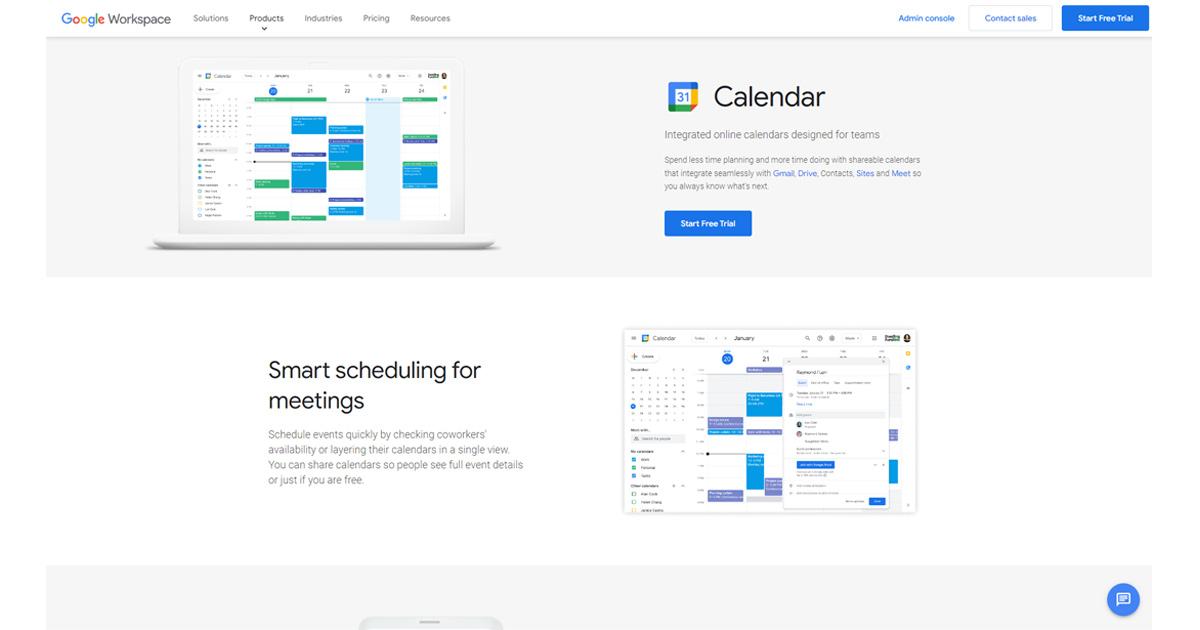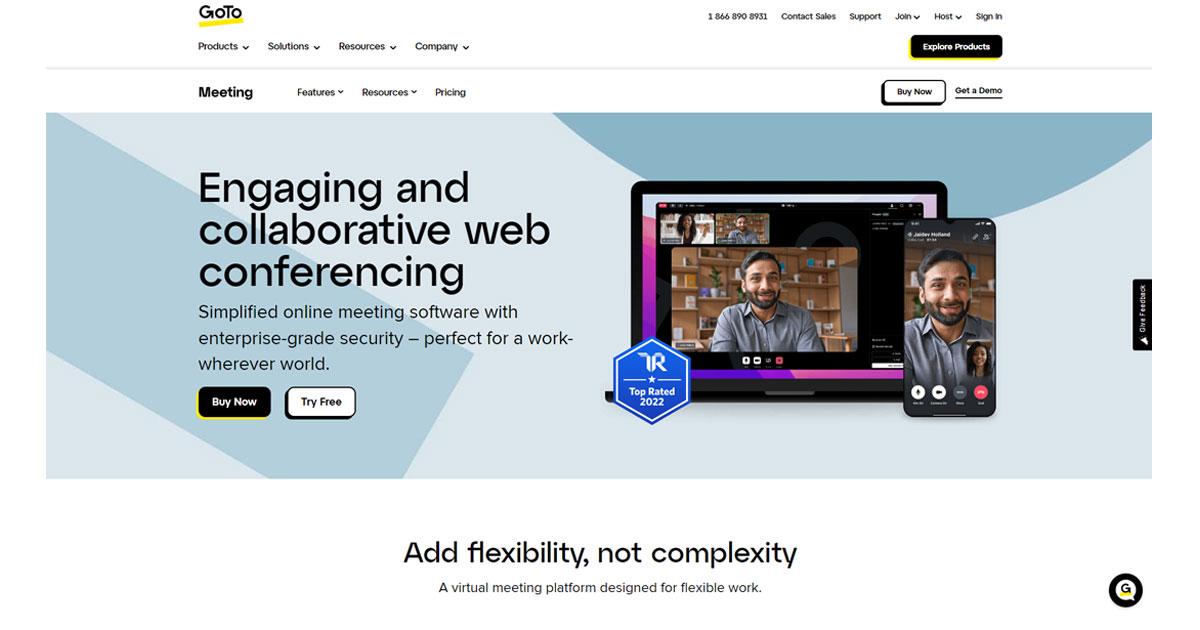Why is Visual Collaboration Important for Remote Teams?
29 Nov
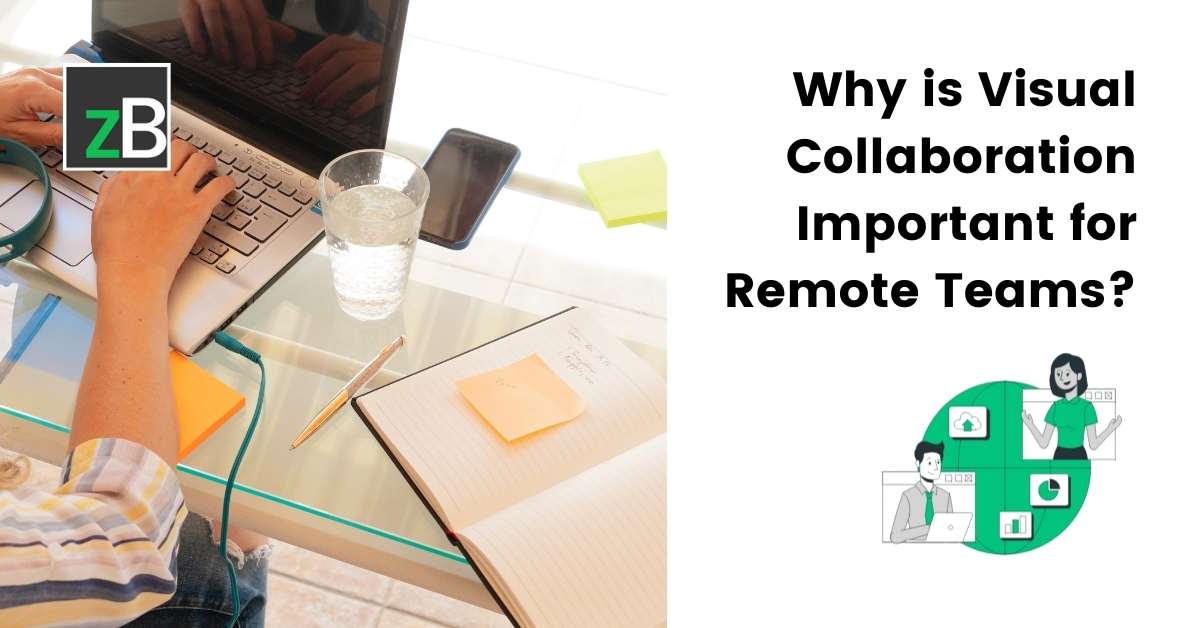
Table of Contents
ToggleEvery day, many people operate from remote offices or within their homes. They must get beyond time constraints and communication problems to do their assignment. On the other hand, managers must maintain adaptability, perseverance, and leadership when working remotely. To ensure their staff members finish their projects, they must establish clear expectations, procedures, and deadlines. Additionally, they should provide verbal and visual collaboration to their team members as needed.
Truth be told, one’s online realm journey will never be a piece of cake. According to Lucid research on how the pandemic affects businesses and workers, 75% of employees believe collaboration suffered the most. They missed the unexpected meetings that brought colleagues together and inspired creative ideas and plans, like swarming into a physical meeting room or congregating in the kitchen. As a remedy, during these times, these concerns can only happen and be reimagined when done in a visual setting.

Image from Pexels
The 5 Benefits of Visual Collaboration for Remote Teams
Visual collaboration helps teams work far apart since it allows people to communicate smoothly with each other. It’s useful for team members to share projects, files, and data without traveling to each other’s locations. Creating a visual meeting space allows team members to collaborate easily on projects without worrying about being heard or understood.
To guide you, here are five benefits of visual collaborations for remote teams for a more detailed explanation.
1. Convenience, Convenience, Convenience
Having a visual meeting room has several advantages. Members no longer need to go through the trouble of scheduling meets or wasting time traveling to another location. Instead, they can open a web browser and start collaborating immediately. You can also directly alter the settings in the meeting spaces to create a cozy atmosphere for all concerned people, making everyone not wary about feeling uneasy during work.
Besides, visual meetings are excellent for monitoring attendance during meetings. Another positive side is that the accompanying visual resources will allow anyone unable to attend the conference to follow along, giving absentees the benefit of reviewing the meeting again once they can.
In other words, all of these benefits boil down to the idea of convenience, a very sought-after feeling of all people in these times. Appreciations to various visual collaboration tools that you can search and try online. Remember, you are a step better every single day because of them!
2. Efficient Communication
Visual collaborations allow you to virtually see your workmates, which makes everything more like an actual conversation rather than a telephone or audio call. A visual meeting room makes it simple for remote teams to interact efficiently and clearly. Big concepts are not well communicated by static documents or spreadsheets, and a lot can be lost in translation when communicating via chats or emails. Besides, you can also use drawings, charts, and boards to share more transparent ideas.
Plus, meetings don’t end as soon as the clock strikes a certain number of minutes. People don’t leave early out of boredom–they’re genuinely interested in what you have to say since they are in a room of comfort and convenience. This makes regular meetings far more effective than they would be otherwise; all credit goes to the various tools you can always try on and maximize.
3. Faster Updates and Feedback
One of the best features of visual collaboration is that it allows you and your coworkers to consult changes taken in real time. This advantage makes it easy for teams to make decisions and solve problems without needing opinion leaders who are also busy hustling and dealing with other concerns. You can always lay down your plans, adjust your goals, construct your campaigns, delegate tasks, and many more through visual collaboration, even in scattered locations. That is the essence of collaboration tools in this day and age, where people can easily make and break things with a click of a button.
4. Better Retention of ideas and mastery of purpose
Low employee engagement strongly impacts your firm’s performance and culture. While not every team member needs to participate to the same extent, finding ways to make them feel recognized, appreciated, and part of the team is still crucial. Some people may experience a greater sense of invisibility due to remote work. At the same time, more introverted team members may feel ignored, dismissed, or uninterested because of the barriers. Therefore, visual tools like flowcharts can assist team members in better grasping how their contributions have a difference, and virtual conferencing technologies like Zoom can keep teams engaged.
5. Healthy collaborations
Furthermore, visual collaborations also offer a venue for unofficial gatherings where participants can communicate personally and exchange ideas, making it an ideal space for a healthy working environment. This pro denotes how visual collaboration can improve any working relationship and establish rapport between geographically separated individuals.
Aside from that, what makes visual collaborations healthy are the things it provides to complete the work faster and easier. You can help your coworkers make assets and give your comments immediately. You can collaborate in creating mockups for your brands. You can share your skills and knowledge, especially in design or other technical skills like layouts, graphics-related software like remove bg, and communication and leadership techniques.
Hence, there is an incredible avenue to convey thoughts and simultaneously partake in different activities. So, you can never go wrong with delving into this setup and eventually learning the visual collaboration tools you can use daily with your teammates.
Types of Visual Collaboration Tools
Visual collaboration technologies combine several material forms, such as text, pictures, videos, and internet links, into a single platform for group discussion. You can view your files from any computer with an internet connection because of most web-based solutions. For more uncomplicated cooperation, you can sync your data across different platforms.
Thus, these visual collaboration platforms have exciting features you can enjoy. But first, you need to know their purpose to use them efficiently. Hence, some of the most widely used types of visual collaboration tools are listed below for your reference.
1. Digital Content Review and Approval Tool
Managing digital content is at the core of any team these days. And a review and approval tool helps you to provide visual feedback and approve the content as if you were there in the office.
Content review and approval tools are essential for the quality assurance of your team’s content. With it, you can:
- Catch issues and provide feedback before publishing.
- Assign and manage feedback and reviews as efficiently as possible.
- Ensure that your content is in keeping with your overarching marketing strategy.
A solution with in-built feedback management tools will make it easier to ensure that each stage in the content creation process flows smoothly into the next without any errors.
One example of such a tool is zipBoard. With zipBoard, you can:
- Manage digital content – images, videos, SCORM courses, URLs, PDFs – from creation to approval. From anywhere, all from your browser.
- Review, assign, manage and approve content, all within a centralized review and approval software.
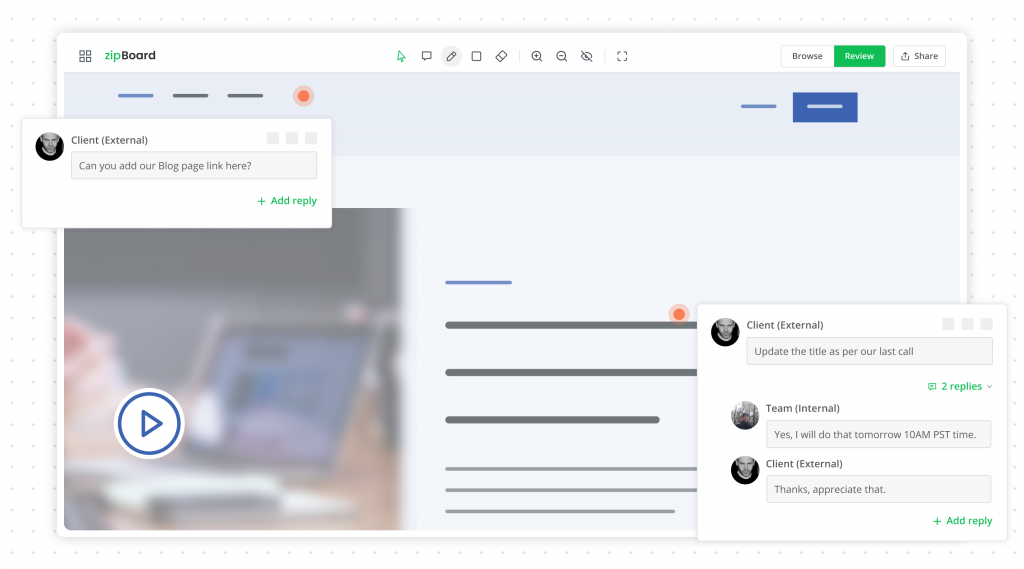
3. Separate emails and attachments pinging everywhere and get your creative work approved on time.
4. Get a variety of visual annotation tools.
5. Assign phases to each piece of content.
6. Collaborate with unlimited stakeholders and clients with flexible sharing options.
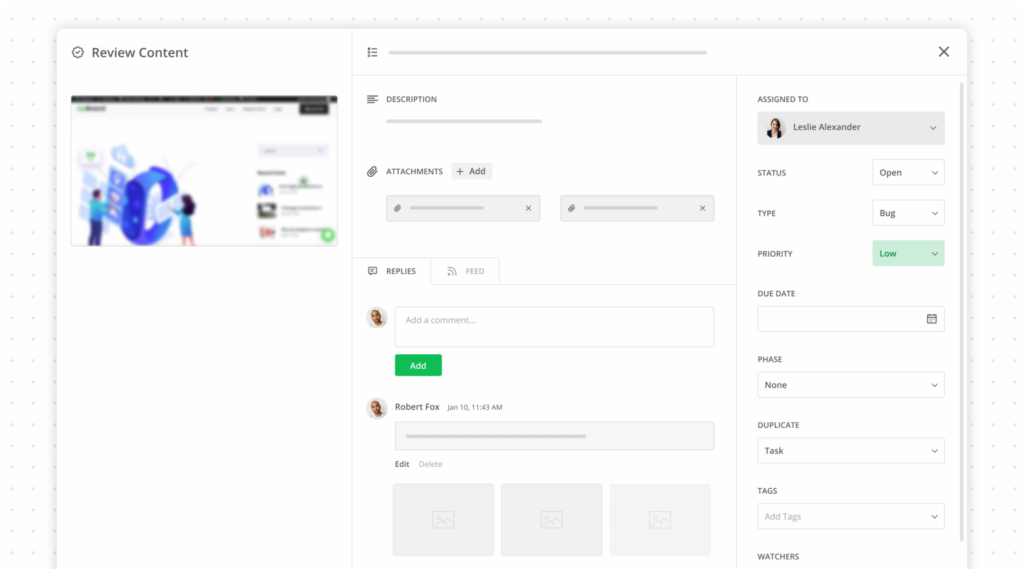
2. Digital Whiteboards
Another common visual collaboration tool is digital whiteboards, which mirror your office’s traditional whiteboards. The best example is Google Jamboard. You may discuss, share ideas, and interact remotely using this platform. Every jam is made up of several frames. You may use Jamboard’s robust editing features within each frame to design and add different patterns, notepads, and text fields. You can also insert images from the search engine disk or your device’s drive and do much more. Jamboard is free, straightforward, and, most importantly, simple.
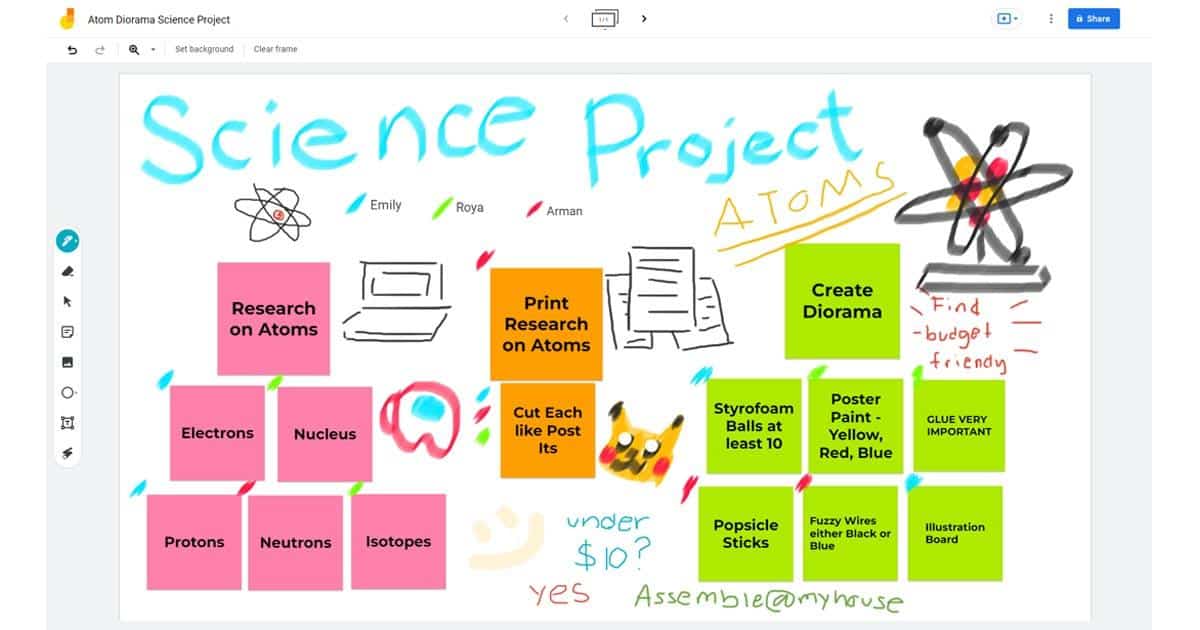
Another example of this type of visual collaboration is Miro. This tool is definitely an excellent online whiteboard for graphic team collaboration among local, distributed, and remote teams. The functionalities of Miro collaboration allow you to monitor and track progress, hold real-time brainstorming sessions with your team, hold web-enabled meetings and seminars, and more. Miro provides templates for creativity and workshops, research and design, strategy and planning, agile workflow, and more.
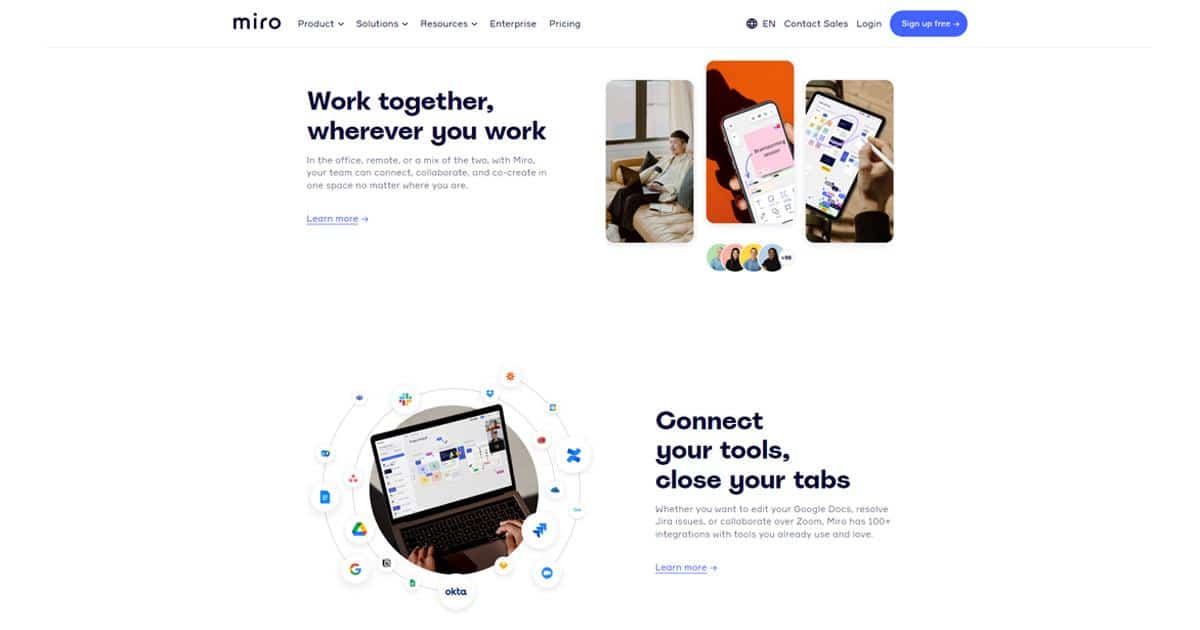
Lastly, you can also check Conceptboard. It provides a large canvas as a collaborative online whiteboard, so you can easily collaborate with others. You can throw ideas, create decks, invite colleagues, share documents, and participate in activities. The best feature of this visual collaborative tool is that guests can join your online meetings without creating an account.
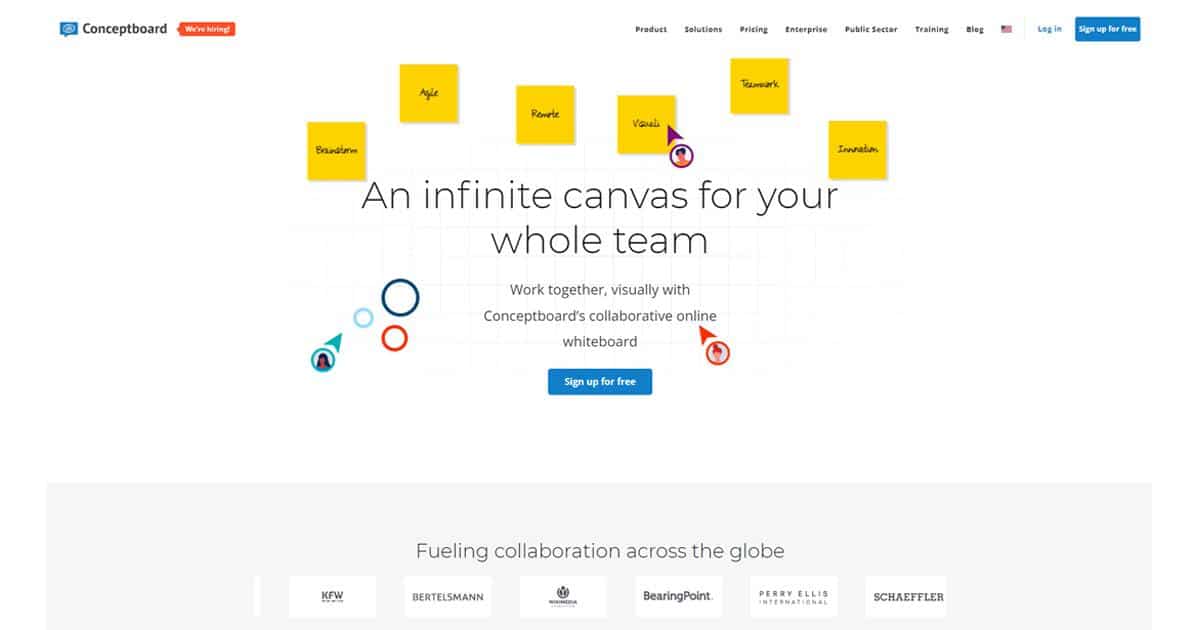
3. Organizational Tools
Making your materials is crucial when you work remotely, so organizational tools can significantly support you with this concern. Slack is a superb visual collaboration tool with many capabilities for this type of platform. One favorite aspect of Slack is its channels. It gives you access to a digital workspace where your team and you can access, plan, and execute the same stuff.
You can set up channels for various projects and themes, submit content, and invite other people to participate. You can decide whether to make channels open to everyone in your organization so they can locate and join them or closed so only people you invite can access them.
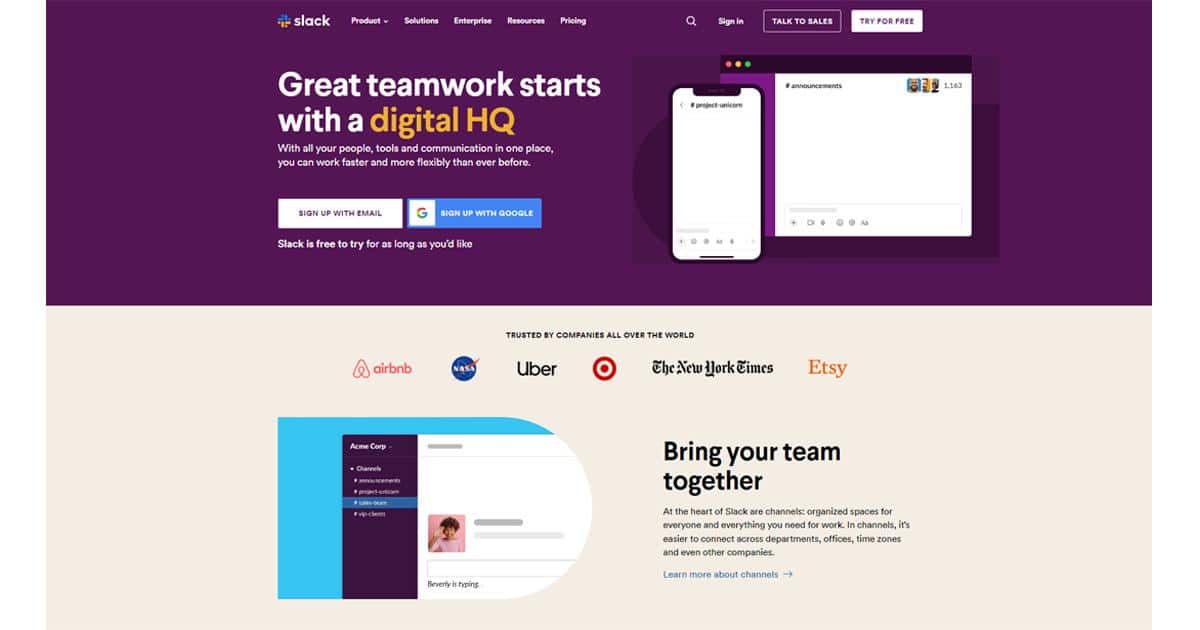
Apart from Slack, you can also try to organize your things through the digital workspace called Notion. In this visual collaboration tool, you can build pages, image-rich docs, checklists, and a variety of other content using Notion. You can start working with your team by inviting them. You can create a website from your pages with just a few clicks by sharing them, adding comments, and mentioning teammates.
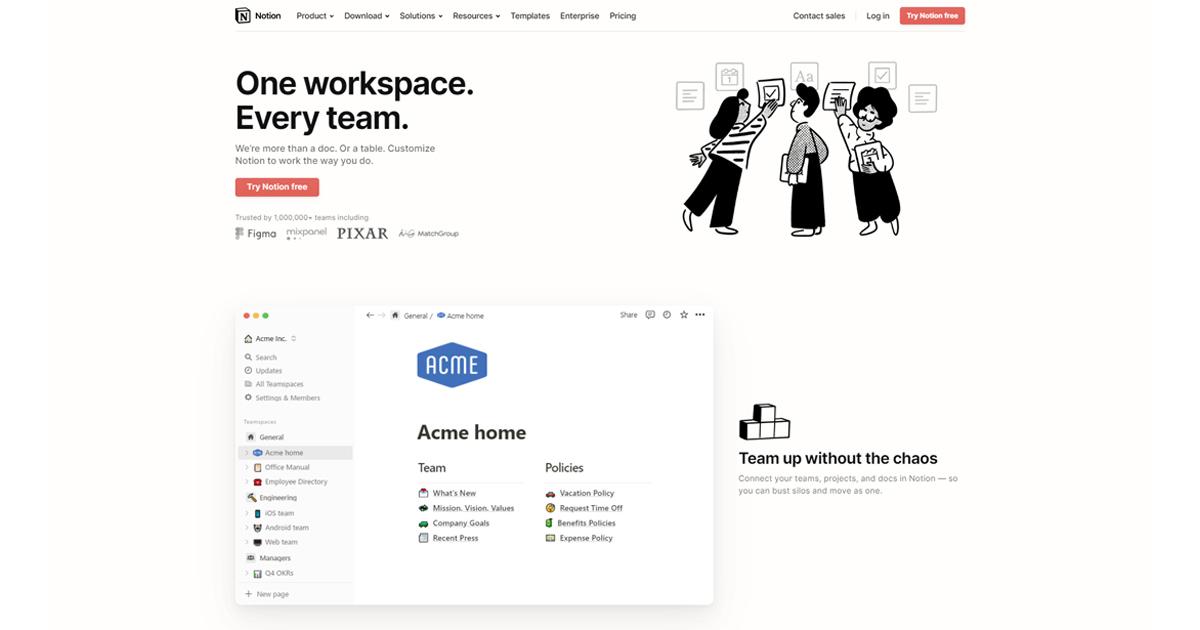
You can also check out Monday.com. You can organize all of your activities and documents onto a single platform available from any location at any time with the assistance of this collaboration tool. Moreover, you can link your teams and work with each other instantaneously. Hence, there are lots of choices for you to discover.
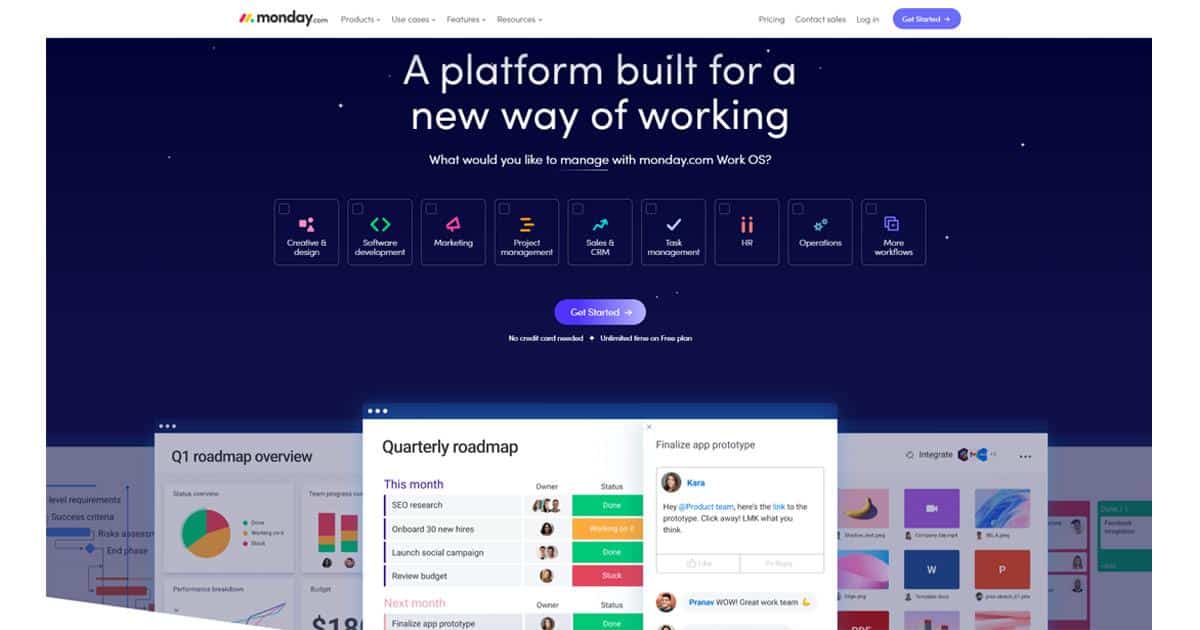
4. Calendar Sharing Tools
Next are calendar-sharing tools. This visual collaboration tool makes it easier for you to book appointments and sessions using the shared calendar without needing to notify everyone. A time slot is selected for the event, the availability of the venue and other participants is checked, and invites are then sent. Through significant time savings, these tools promote teamwork and efficiency of workflow.
When considering industry-standard calendars, Calendly is frequently the first thing that is regarded. With the help of your favorite calendar, Calendly’s automatic scheduling feature can check your availability. By using this example, you may stop exchanging emails back and forth and book meetings simultaneously. Other features include specifying a grace period between sessions and time zone identification. It ensures long-term dynamic development and is interoperable with other tools. Its paid version allows you to establish numerous categories; the free version just allows one.
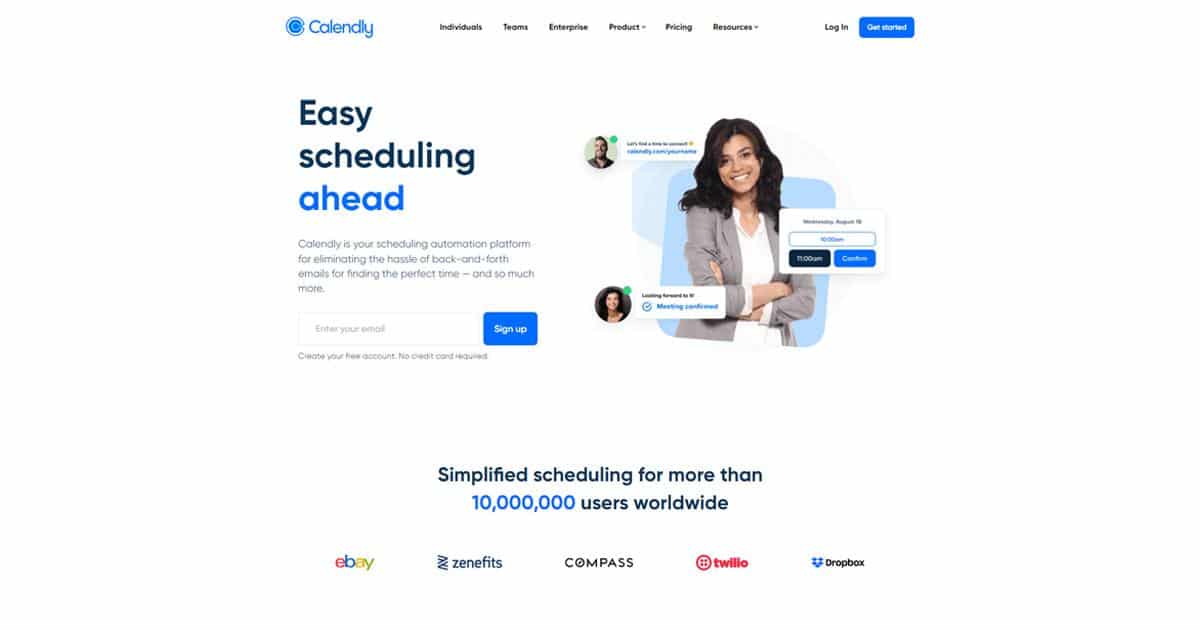
Google Calendar is also another fantastic example. It is a team-focused shared calendar easily incorporated into almost anything you use. The most straightforward integrations, of course, are between Google services like Gmail and drive. Besides, you can utilize this shareable calendar for workplaces via smartphones, iPad, and laptops to offer customers mobility. When you’re signed into your Google account, Google Calendar syncs your calendar across all your devices and web browsers.
5. Video Conferencing Apps
During the pandemic, video conferencing became a staple tool for everyone, especially those in digital-related industries. These visual collaboration tools became a technique for interacting with many individuals in a dispersed location while maintaining a live, visible connection via video.
Undeniably, you already have heard of Zoom, a web conferencing application where you can meet with your teammates or clients virtually. This very productive solution enables you to connect and meet up to 500 people in a single meeting room. Zoom equips benefits such as affordability, easy navigation, recording support, transcription, and accessibility to different devices.
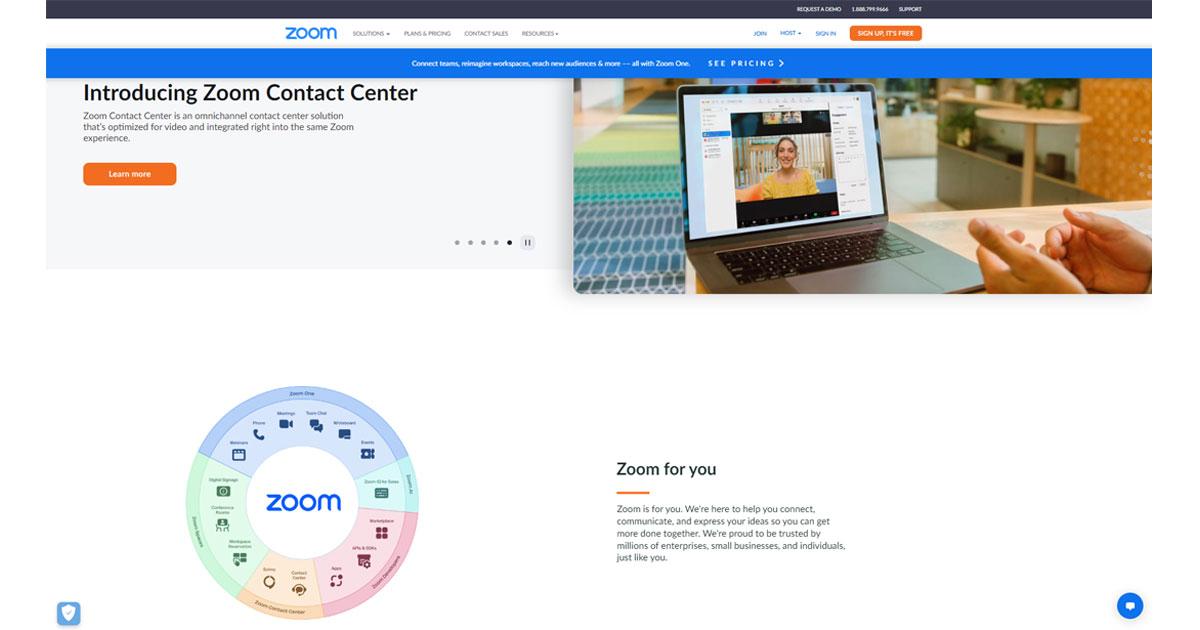
Additionally, you can also try GoToMeeting. It is similar to Zoom, allowing you to conduct events virtually through video, audio, and presentation (sharing your screen). The outstanding call quality of GoToMeeting is its most notable feature. This high-definition video conferencing technology ensures that everyone can see and be seen well, regardless of how far team members are located apart. Additionally, the app makes it simple to join a discussion from a smartphone, which is a big plus for a team constantly on the go.
6. Instant Messaging Tools
Unquestionably, you already used some of these tools as they rapidly became a trend during the lockdown season. Yes, these are instant messaging tools that enable you to send and receive real-time texts and internet file exchanges over a computer using the internet.
One example is Viber. It is an instant messaging app that lets users send messages to others in the same app for free. It works flawlessly on various mobile operating systems and recognizes users by telephone numbers. Additionally, the software only requires an internet connection to route all messages and calls. This avoids cell carriers and enables cost-free, efficient team communications. Even better, Viber allows users to create group chats with an unlimited number of members and interchange various media.
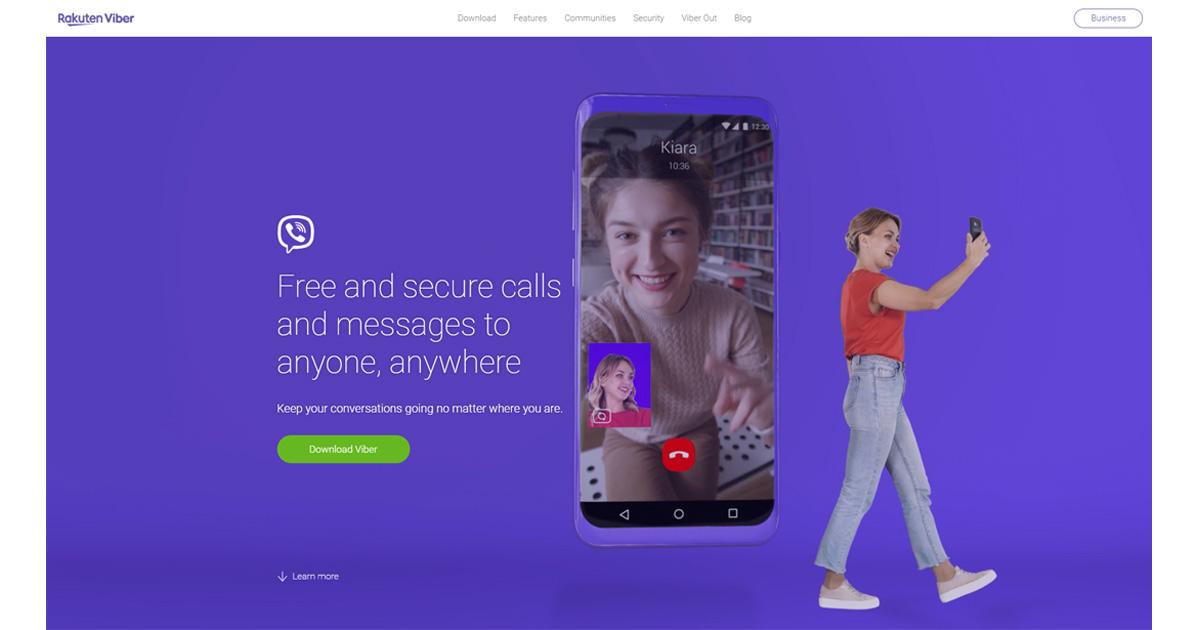
Of course, it would be a sin not to include the famous Facebook Messenger. It is a built-in messaging tool for Facebook, which makes it popular among social media users. Although made for family and relatives, this app eventually became a good platform for workers to communicate their thoughts and ask for feedback or reviews with a button snap.
Therefore, Facebook Messenger is the most commonly used instant messaging program, with approximately two billion Facebook members worldwide. Its valuable features allow you to transmit audio files, documents, and even photos as attachments when communicating. As with most instant messaging apps, Facebook Messenger lets you save conversations that you might want to look back on in the future.
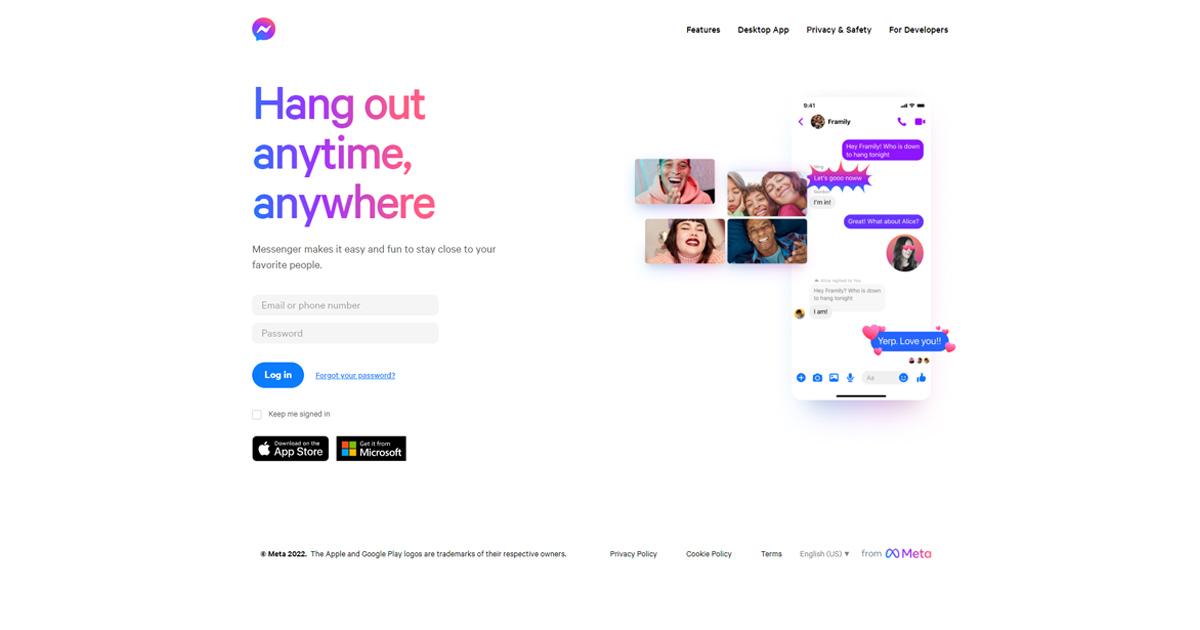
How to Choose the Right Visual Collaboration Tool for Your Team?
So, after knowing some types of collaboration tools, it is now critical to select the most effective platform for your team. It can be a single tool or a combination of two; it is definitely up to you.
Good teams recognize the necessity for effective communication and choose visual collaboration solutions. Project managers, designers, engineers, and other professionals will find these services excellent. They are handy when working with others to brainstorm fresh concepts or troubleshoot issues. Most importantly, it’s critical to comprehend a tool’s operation and the qualities you require before selecting one. You should have a free account to get a good start while deciding which premium account to buy.
After all, because they boost productivity and enhance teamwork, visual collaboration tools are necessary for project management and work relationships. Therefore, making the appropriate choice for any team is vital because it influences how successfully your initiatives work out. You can immensely benefit from these outreach options if your decisions are reasonable! So, know your goals, study every tool, understand their purpose, and invest to use them.
Image from Pexels
Common Challenges when Using Visual Collaboration Tools and How to Overcome Them
It is not a secret that every setup has dilemmas you must address. Using different visual collaboration tools will surely have various difficulties that you need to find solutions to continue your work and achieve your goals. And here are some of them.
1. Not having clear vision and indecision
Working toward an uncertain purpose is challenging. Team members may work mindlessly if they lack a thorough understanding of what must ultimately be done, which would seriously impair their performance, enthusiasm, and productivity. It could be challenging for team leaders to assign duties and tasks to each group member without a defined objective.
This, in turn, could exacerbate negative thoughts about a job and impede teamwork. Employees are more inclined to be reluctant to collaborate when given no KPIs to monitor or unaware of what the other team members are doing to assist in the project’s success.
The solution is to set and discuss goals. Team members must make it a point to get together routinely. They should all be kept informed to guarantee that everyone is on the same page when assessing progress and making changes. Additionally, it would be beneficial if they could communicate using a single platform and track project developments instantaneously.
2. Problems in having smooth-sailing communication
It’s essential to encourage an environment of open communication at work. Collaboration can occasionally suffer from a lack of open communication among team members or the absence of a common forum for everyone to voice their ideas. Team members are less inclined to participate if they don’t feel they can interact, which could result in the project failing.
To solve this, organizational leaders must interact with their teams actively and motivate them to offer their opinions and insights. They must develop opportunities for candid conversations with each employee. They could also need to spend on resources to make communication more effective.
3. Unproductivity
Lack of feedback is one of the biggest obstacles to productivity in an office setting. Team members frequently desire to have their contributions recognized or appraised. Using conventional communication channels like email is another barrier. Critical people’s responses to emails could take some time, which might seriously impede workflow.
The remedy here lies in the members’ response speed, which enables a more productive workplace. Ensure clear instructions when remarking on tasks and projects, and consider moving to an electronic messenger service for improved communication. During the initial weeks after the launch of a new collaborative channel, productivity may fall.
This is typical since your colleagues are still working out how to use the new platform and best support their work. They are constantly learning how and where to traverse it. However, with enough time and the right direction, you could raise or even sustain the productivity levels of your staff.
Image from Pexels
Conclusion
For teams working remotely, visual collaboration is crucial since it keeps people on the team involved and connected. Team members can share information, present, and collaborate on projects with visual collaboration tools. Companies should examine which current visual collaboration solutions work best for their team.
The importance of visual collaboration for distant teams cannot be overstated for some reasons. Keeping in touch, assuring everyone is on the same page, and improving productivity may all be achieved with its aid. Consider looking into some of the visual collaboration tools available to find ways to enhance collaboration among your remote staff, and a happy work relationship will surely follow!
Image on Banner from Pexels
| Author’s Bio | |
|---|---|
 |
Vy, Removal.AI Vy is a content writer for Removal.AI– an AI tool used to remove bg from images for social media, eCommerce, web, app development, and marketing automation. She loves to share her insights about tech, AI, and marketing. |
Related Post
Recent Posts
- Why Your Team Needs a Content Feedback System (Not Just Comments in Docs) May 28, 2025
- Content Approvals Are Slowing You Down — Here’s the Fix May 26, 2025
- How to Streamline Content Review and Approval — Best Practices, Tools & Automation May 12, 2025
- What Is Content Operations? And Why It Breaks Without a Feedback & Approval System May 3, 2025
- Why Designers Need a Website Visual Feedback Tool: Improve Design Reviews & Client Collaboration April 25, 2025
©️ Copyright 2023 zipBoard Tech. All rights reserved.
